NCAA Tournament 2018 Bracket: Region-by-Region Breakdown

The field is set for the 2018 NCAA tournament, after Sunday selection show revealed the 68 teams that comprise this year's bracket. Virginia was named the top overall seed in the tournament and the Cavaliers will play in the South region. The other No. 1 seeds are Villanova in the East region, Kansas in the Midwest and Xavier in the West.
Below, SI.com's experts have broken down the teams to watch in each region, from the outlook for the top seeds to the squads most likely to make a Cinderella run and more.
SOUTH
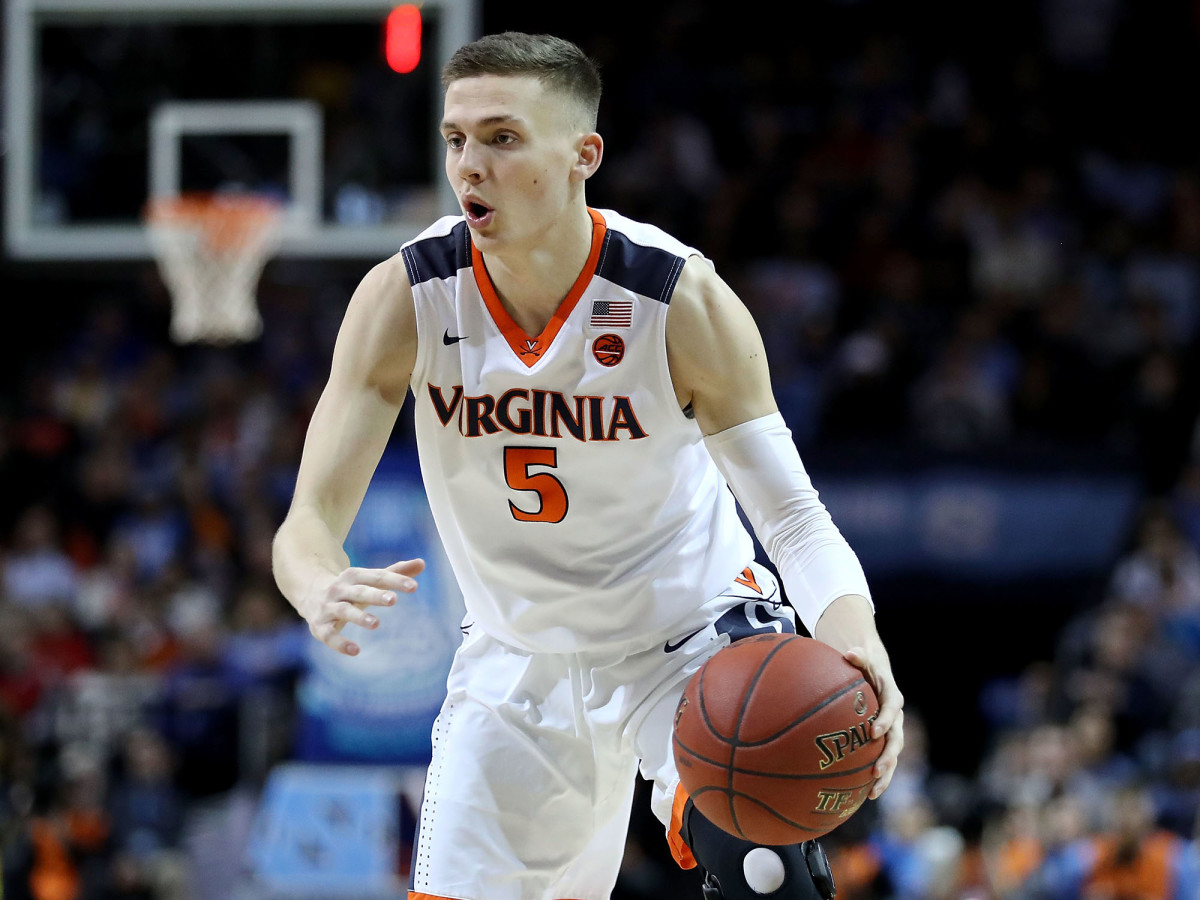
State of the No. 1 seed
No team imposed its will on college basketball this season as consistently and comprehensively as Virginia, which lost just twice all year, cruised to ACC regular season and tournament titles and posted the most efficient defense measured in the 17 seasons tracked by kenpom.com. The Cavaliers haven’t allowed an opponent to reach 70 points all season (and only let nine break 60). March has been a different beast for Tony Bennett’s teams, which have invariably run into some foe that keeps its cool in the face of the maddening Pack-Line defense and gets enough tough buckets to send the Hoos home before the Final Four, but this year’s lineup has no shortage of clutch shot-makers—starting with sophomores Ty Jerome and Kyle Guy and freshman De’Andre Hunter—who have been willing and able to carry UVA through the crunch-time minutes.
Editor's note: On Tuesday, Virginia announced that ACC Sixth Man of the Year De'Andre Hunter will miss the NCAA tournament due to a broken wrist.
Who has the toughest draw? No. 4 Arizona
The Wildcats have this summer’s presumptive No. 1 pick in versatile center Deandre Ayton, but given their spot in the top half of the South Region as the No. 4 seed, casual NBA draftniks should make sure they set aside time for scouting Ayton during the first weekend, just to be safe. Arizona opens with a high-flying Buffalo team that saw five tournament teams during nonconference play and averaged the seventh-most points per game in the nation (84.8) on its way to an MAC title and a No. 13 seed. Its reward for besting the Bulls in Boise could be the marquee matchup of the round of 32: a duel with SEC tournament champion Kentucky, which is characteristically peaking at the perfect time. Survive that blue-blood slugfest, and Arizona can look forward to the No. 1 overall seed in the Sweet Sixteen, with a cross-country flight to Atlanta to boot. Coach Sean Miller has famously bumped up against an Elite Eight ceiling three times in his nine years in Tucson, but even making it back to the regional final with three wins in the next two weeks would represent a superlative coaching job.
The team that could bust your bracket: No. 15 Georgia State
Cincinnati claimed the final automatic bid of Selection Sunday and a No. 2 seed with a gritty win over Houston, but the Bearcats’ hard-fought AAC tournament title run spotlighted how bleak the offense can look when the jumpers aren’t falling. The Panthers, back in the bracket for the first time since R.J. Hunter’s 2015 first-round game-winner against Baylor caused his coach and father Ron Hunter to fall out of his chair, play a zone defense that will demand Cincy find its range early on. On the other end, Georgia State sophomore D’Marcus Simonds averages 20.9 points per game, more than Hunter ever did in his three years in Atlanta, and plays without a governor, making him an ideal candidate for a March star turn. The Bearcats won’t be able to just bully their way to the second round.
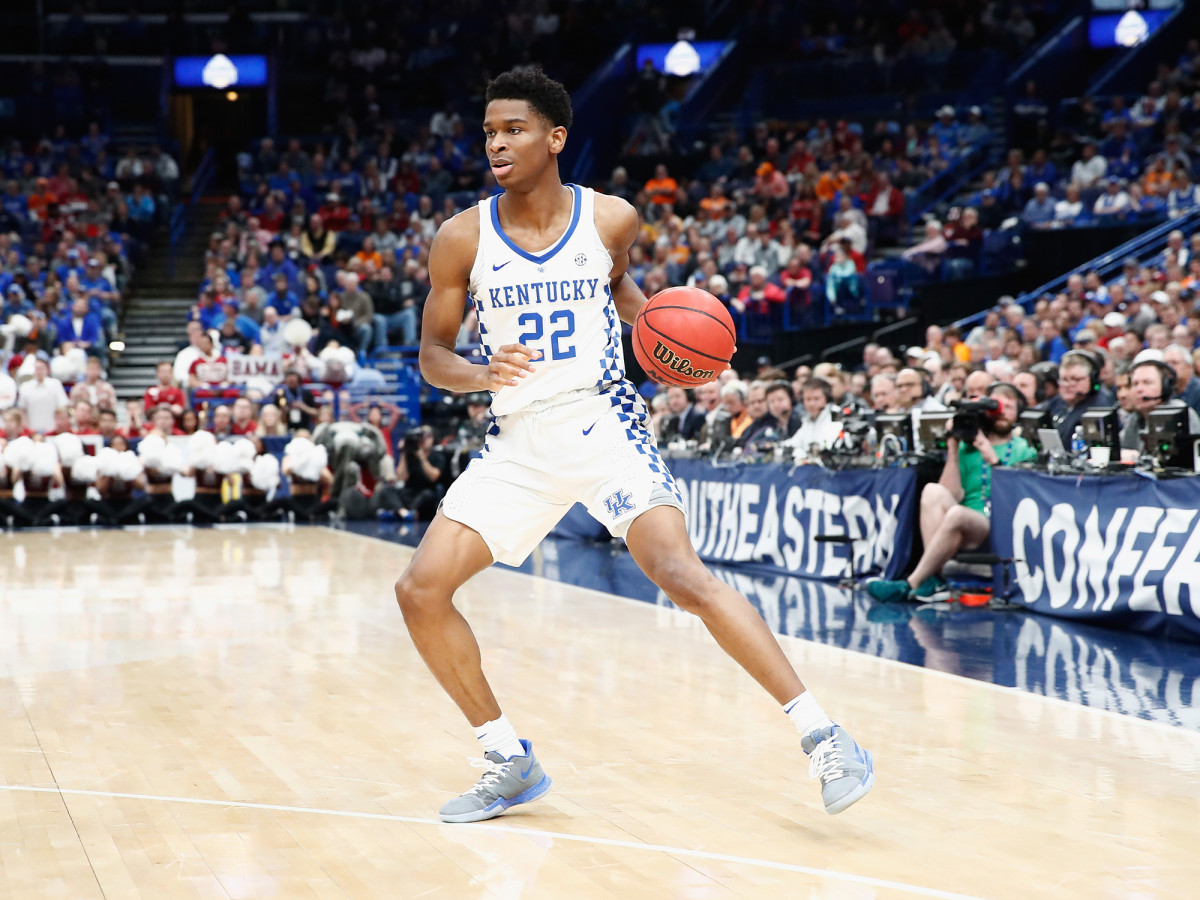
Player to watch: Shai Gilgeous-Alexander, G, Kentucky
Gilgeous-Alexander is a big reason why the Wildcats have the look of a Final Four sleeper after an especially inconsistent regular-season. The 6’6” freshman guard from Ontario stepped to the controls of the offense in mid-February, pouring in 29 points against Tennessee on Sunday to earn SEC tournament MVP honors. It may be too much to expect the Wildcats to shoot it as well in Boise as they did in St. Louis, but if Gilgeous-Alexander maintains his current level, they’ll be one of the tournament’s toughest outs.
Most intriguing matchup: No. 6 Miami vs. No. 11 Loyola-Chicago
The Ramblers are everybody’s favorite Cinderella candidate, making their return to the Big Dance after a 33-year drought, but dismiss a Jim Larrañaga team at your own risk—you may recall Larrañaga knows a thing or two about plucky 11-seeds. The Hurricanes have a balanced lineup led by hyper-athletic freshman guard Lonnie Walker IV that has been hit-or-miss since sophomore Bruce Brown, the team’s most important player, suffered a stress fracture in his foot in late January. (Brown won’t play Thursday.) Their charge will be containing Missouri Valley Conference player of the year Clayton Custer, who needs to return to his regular-season form after a shaky MVC tournament.
Regional finalists: No. 1 Virginia and No. 3 Tennessee
In a conference littered with potential first-round picks, the Volunteers earned a share of first-place by outworking everyone else, with leading scorer and SEC player of the year Grant Williams setting the tone. They take a punch from everyone in their half of the bracket and come back stronger, setting up a region defined by defense to be decided by a knock-down, drag-out battle in Atlanta.
Pick: Virginia
Love it or hate it, the Cavaliers have refined their brand of basketball to its purest form. They will be tested, but not bested, on their way to San Antonio.
EAST
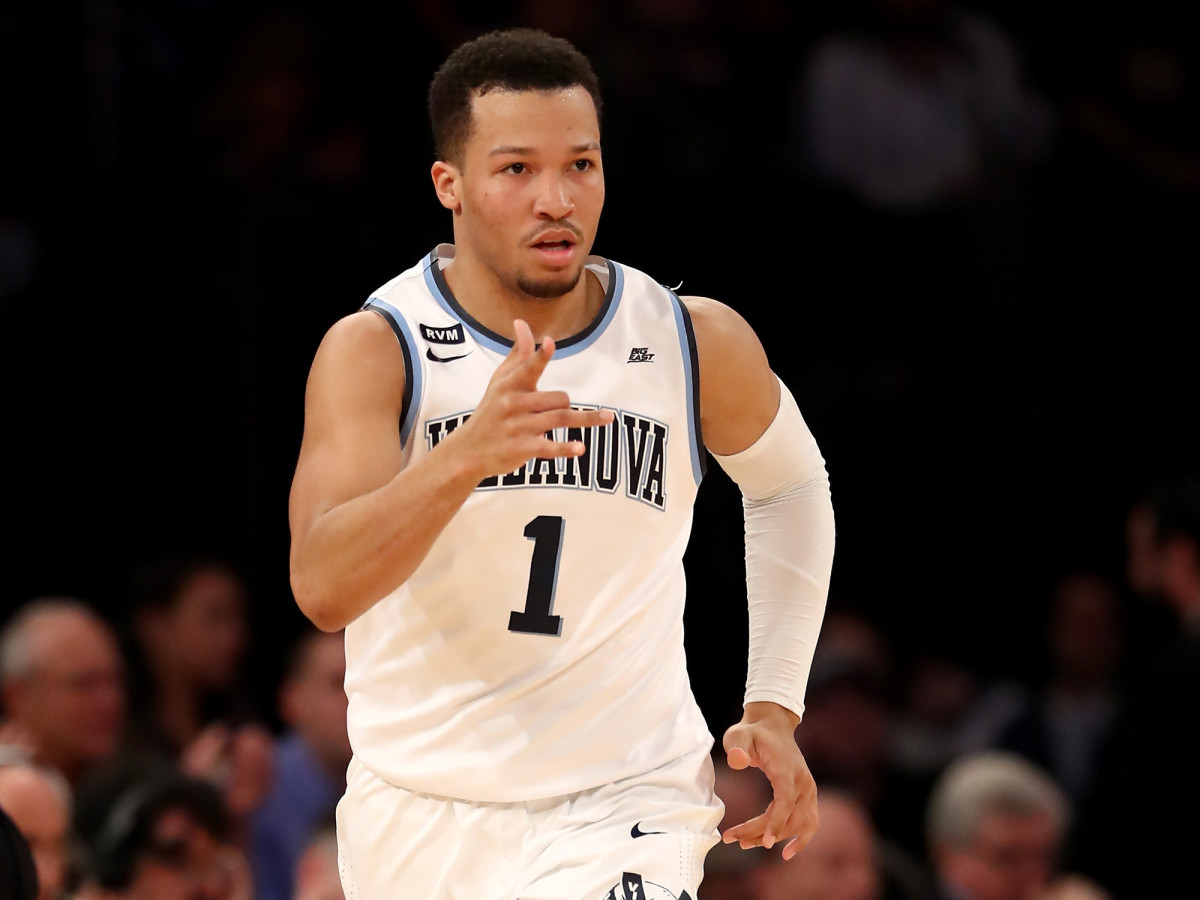
State of the No. 1 seed
Villanova enters the tournament with the momentum of a Big East tournament championship, which has to help the Wildcats feel a little better about having not won the league’s regular season title for the first time in five years. The latter distinction was the result of a relatively off stretch in February during which they lost three out of six games. But last week’s visit to Madison Square Garden provided a chance for Jay Wright’s squad to make it’s rather agreeable case as a national title contender.
First and foremost was the play of point guard Jalen Brunson and wing Mikal Bridges, who averaged a near-identical 23.0 and 22.7 points per game, respectively, during the Big East tournament, and offer as strong and well-rounded a one-two punch as you’ll find in the tournament field. With a 39.8% team three-point shooting mark and the country’s eighth-lowest turnover rate, there’s little doubts about what Villanova offers on offense. (Just ask Butler, which fell behind 19-0 to begin Friday’s game.) The Wildcats’ adjusted efficiency on that end is the best since Kenpom.com began tracking such metrics in the 2001-02 season.
What might be concerning is its defense, which ranks 22nd nationally but has proven susceptible, allowing 1.1 points per possession or more seven times this season, most notably surrendering 1.4 in a wild loss to Butler at the end of December. There’s also the concern over Villanova’s recent reputation for early tourney exits: Other than its 2016 national championship run, the Wildcats haven’t made it to the second weekend since 2009, including second-round losses as a top-two seed in 2014, ‘15, and last season. There’s a sense of trust-them-at-your-own-risk, but in a year like this one, Villanova’s as easy to believe in as anybody.
Who has the toughest draw? No. 4 Wichita State
The Shockers have their highest seed since entering the tournament undefeated in 2014, but the matchups are less than comforting thanks to the unusual styles they will encounter. First up is Marshall, a No. 13 seed that plays at one of the country’s fastest tempos (its average offensive possession is the country’s third shortest) and loves to bomb away from deep (45.6% of its field goal attempts are threes). Should it survive the Thundering Herd, Wichita State will likely encounter the aggressive all-out pressure of West Virginia, a team that by measure of overall efficiency (13th in the country) ranks as the field’s best No. 5 seed. And then, as with any No. 4 seed, an advancing Shockers team would face the prospect of their region’s No. 1 seed to begin the second weekend. To get there, Wichita State better prepare to slow down its first opponent, then avoid getting sped up by its (likely) second.
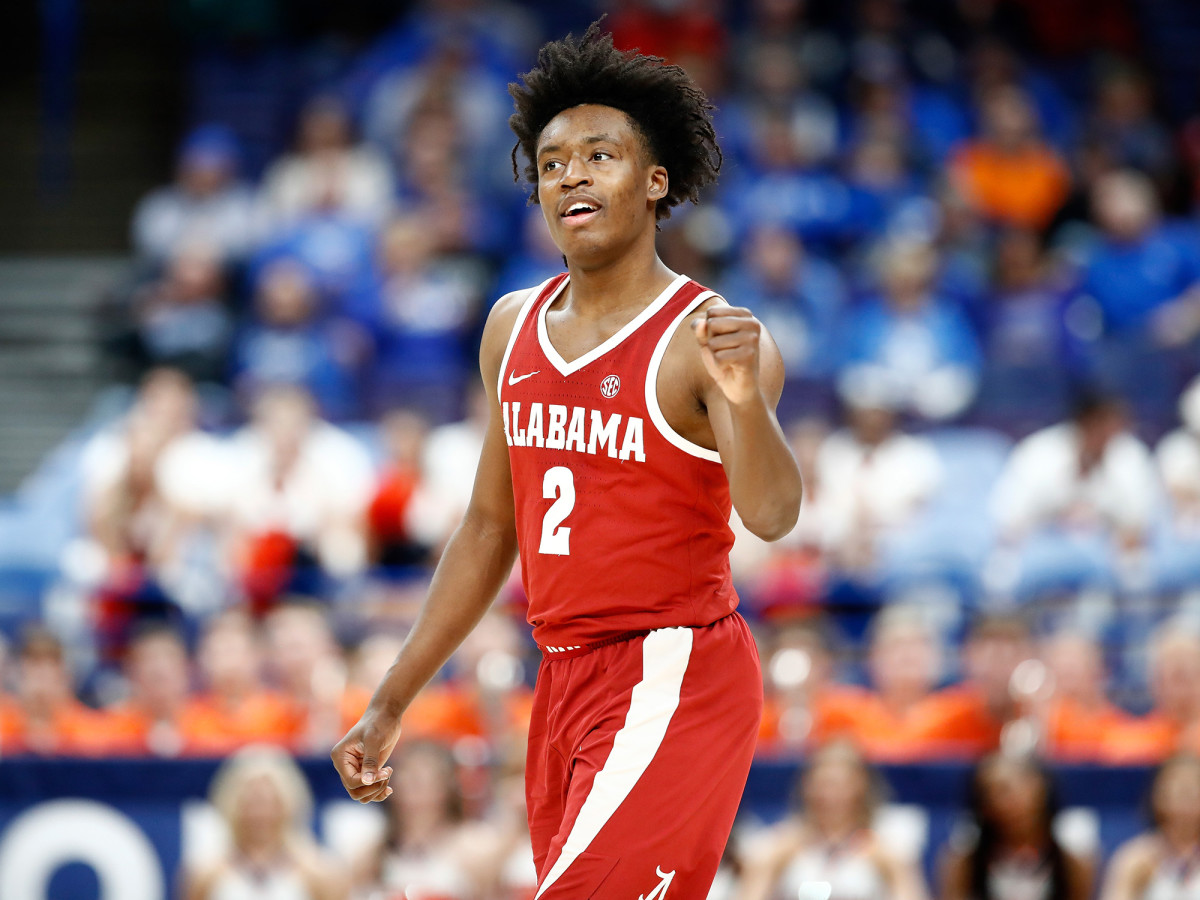
The team that could bust your bracket: Alabama
This might seem like a stretch. The Crimson Tide finished 19-15 and had to play their way off the bubble this past week with wins over Texas A&M and Auburn to snap the five-game losing streak that closed their regular season. More people are griping about them being seeded too highly at No. 9 than their potential for a Sweet 16 run. But in a region where there’s no markedly under-seeded team, an underdog that defends well (13th nationally in efficiency and the SEC’s best in league play) and has a consensus top-10 NBA draft pick at point guard is a reasonable guess for who might make a mess of things. That draft pick is Collin Sexton, who is averaging 25.5 points over his last four games and has the kind of talent that can take over a game—the kind that scored 42 points against Minnesota in that November game Alabama nearly won while playing three-on-five. The Tide’s offense isn’t always pretty, ranking 115th nationally and 12th during SEC play, and it’s prone to youthful turnovers and lacks three-point shooting. But... if Alabama is getting stops and Sexton is on, it’s a team capable of disruption.
Player to watch: Carsen Edwards, G, Purdue
Everyone knows about Brunson and Bridges, but it’s time to give some love to the top playmaker on the region’s No. 2 seed. Edwards is a strong guard with a 6’1” frame that wouldn’t look out of place on a football field, a quickness that can make him hard to keep in front of and a 41.2% stroke from beyond the arc. He’s a pure scorer who has upped his output over the last six weeks, averaging 22.7 points since the start of February, which could be a prelude to bigger things over the coming weeks. And since teams have to devote attention to the capable scorers around him—and especially inside to handle 7’2” Isaac Haas and 6’8” Vincent Edwards—he should have room to operate.
Most intriguing matchup: Florida vs. UCLA or St. Bonaventure
The Gators have risen and fallen with their outside shooting this season, which can be a recipe for getting upset when those shots aren’t falling. Either of their potential opponents, who will play Thursday in Dayton, present potentially difficult matchups. UCLA is an uptempo team that can shoot the three-ball well and is led by a guard, Aaron Holiday, who just put up 34-point games on consecutive nights in the Pac-12 tournament. Meanwhile St. Bonaventure has its own potential big-game scorer in senior Jaylen Adams (19.8 ppg, 45.7% from three) and starts two more senior guards alongside him in Matt Mobley and Idris Taqqee. Either UCLA’s precocious talent and St. Bonaventure’s veteran backcourt will be a problem for higher-seeded Florida.

Regional finalists: No. 1 Villanova and No. 3 Texas Tech
This doesn’t look like a region where things will get too wild in the deeper stages, though that sort of thing is by nature not easily foreseen. Still, the Wildcats are too good in general and playing too well now to see them failing to reach at least the Elite Eight. On the other side, Texas Tech is an elite defensive team whose offense can be spotty but will reportedly have the full services of guard Keenan Evans, an All-Big 12 first-teamer who has been battling a toe injury that contributed to the Red Raiders’ late-season swoon and slip from a presumed No. 2 seed. There’s a lot to like about Purdue, which is experienced and well-rounded inside and out, but the Boilermakers’ defense struggled down the stretch (it ended up ranking fifth in Big Ten play) and their strengths on offense could be tempered by Tech’s stout D. In a squeaker, that gives us a No. 1 vs. No. 3 game in Boston.
PICK: Villanova
There seems to be a general consensus that Villanova’s region is the softest of the four, which makes this an even more chalk-ily safe pick than it would otherwise be. But frankly, Villanova is the No. 2 team in the country for a reason. Its offense is the country’s best, it has two All-America-level talents and it’s playing particularly good basketball at the moment. A year after another first-weekend flameout, the Wildcats live up to their seeding and head to San Antonio.
MIDWEST
The Midwest is headlined by a program that knows a thing or two about being a No. 1 seed. This marks the eighth time in 12 seasons, as well as the third consecutive season, that the Jayhawks earned a spot on the top line. The No. 2 is another blueblood, Duke, and a popular preseason national championship pick, Michigan State, rounds out the top three. This region has something for everyone: Hall of Fame coaches in the Spartans’ Tom Izzo, the Jayhawks’ Bill Self and the Blue Devils’ Mike Krzyzewski; National Player of the Year candidates in Oklahoma’s Trae Young and Kansas’s Devonte’ Graham; and elite NBA prospects in Duke’s Marvin Bagley III and Wendell Carter Jr., the Sooners’ Young and the Spartans’ Jaren Jackson Jr. and Miles Bridges. Throw in what’s bound to be a trendy No. 12-No. 5 upset pick, and the Midwest could be the most intriguing region in the field.
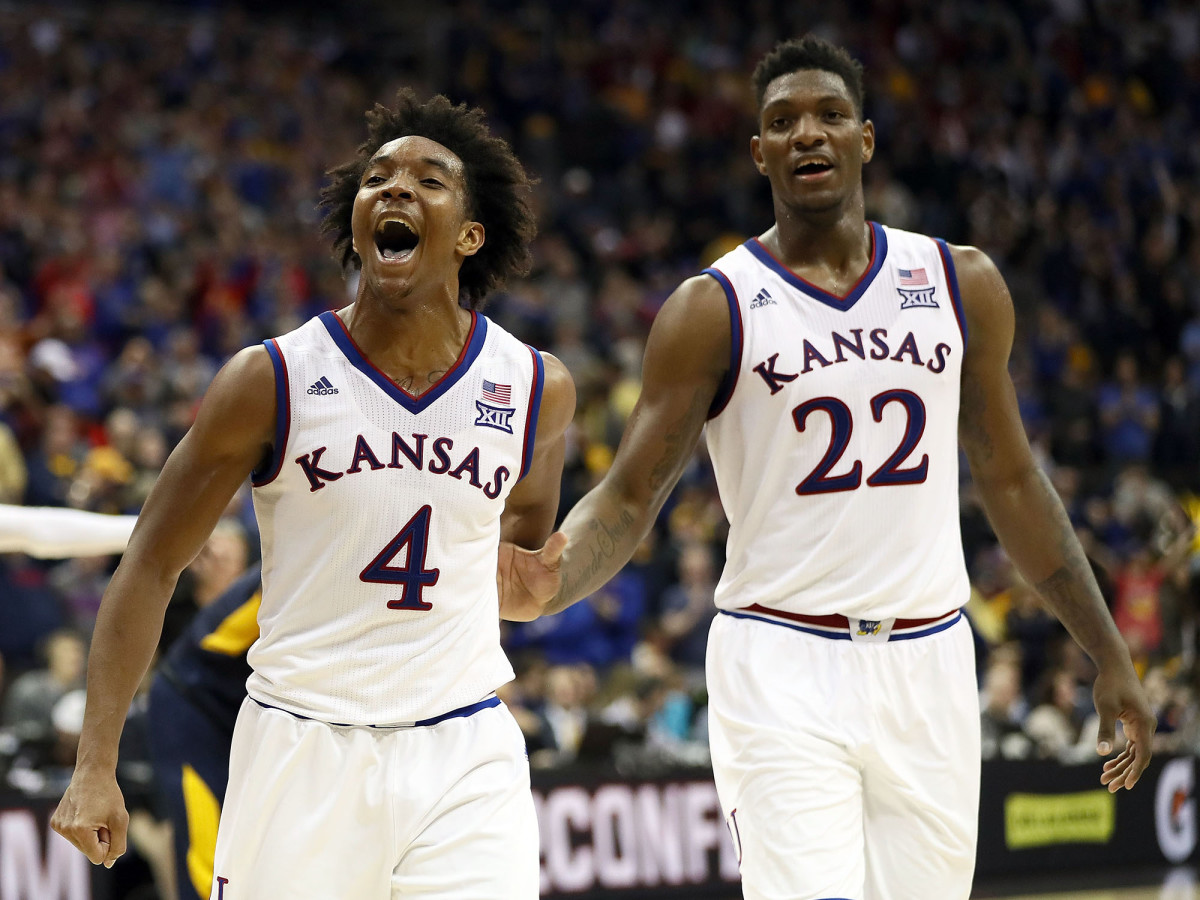
State of the No. 1 seed
Kansas will cruise into the NCAAs following its second Big 12 tournament title in three years—before that, the Jayhawks won a record-setting 14th consecutive regular season conference title. There were a couple of points during Big 12 play when it looked like Kansas’s streak might be in jeopardy, but the Jayhawks steadied the ship by bouncing back from a surprising loss to Baylor on Feb. 10 to win five of their final six games of the regular season. In the league tournament, they beat Oklahoma State by 14 points only five days after the Cowboys took down Kansas in Stillwater, then handled in-state rival Kansas State in the semis and West Virginia in the finals.
The team that could bust your bracket: No. 10 Oklahoma
The Sooners got off to a really promising start this season, winning 12 of their first 13 games and rising as high as No. 4 in the AP Top 25 Poll. But they had a rough time navigating the rigorous Big 12. Oklahoma posted an 8-10 record against league competition and at one point dropped six games in a row. Those losses dented the Sooners’ tourney résumé, but it would be foolish to discount the possibility of Young propelling the Sooners to a few wins against better-seeded teams, including a potential upset over Duke in the second round. Young is the most explosive scorer in the country, and if his shots are falling, he’s close to un-guardable.
Player to watch: Devonte’ Graham, G, Kansas
Last season, Graham took a backseat to fellow Kansas guard and National Player of the Year winner Frank Mason. This season, he’s built a credible NPOY case of his own by guiding a thin Jayhawks squad (345th in Pomeroy’s bench minutes statistic) through the most challenging conference in the country. Young is in the closing stretch of an awesome freshman campaign, but Graham was better than him against Big 12 competition. Graham is a big-time shot- and play-maker who’s remained an efficient scorer despite taking on a much larger offensive workload without Mason around and Self basically never takes him off the floor. (Graham averaged 39.1 minutes per game during Big 12 play.) If Kansas is seriously tested before the second weekend, trust that Graham will lead it to safety.
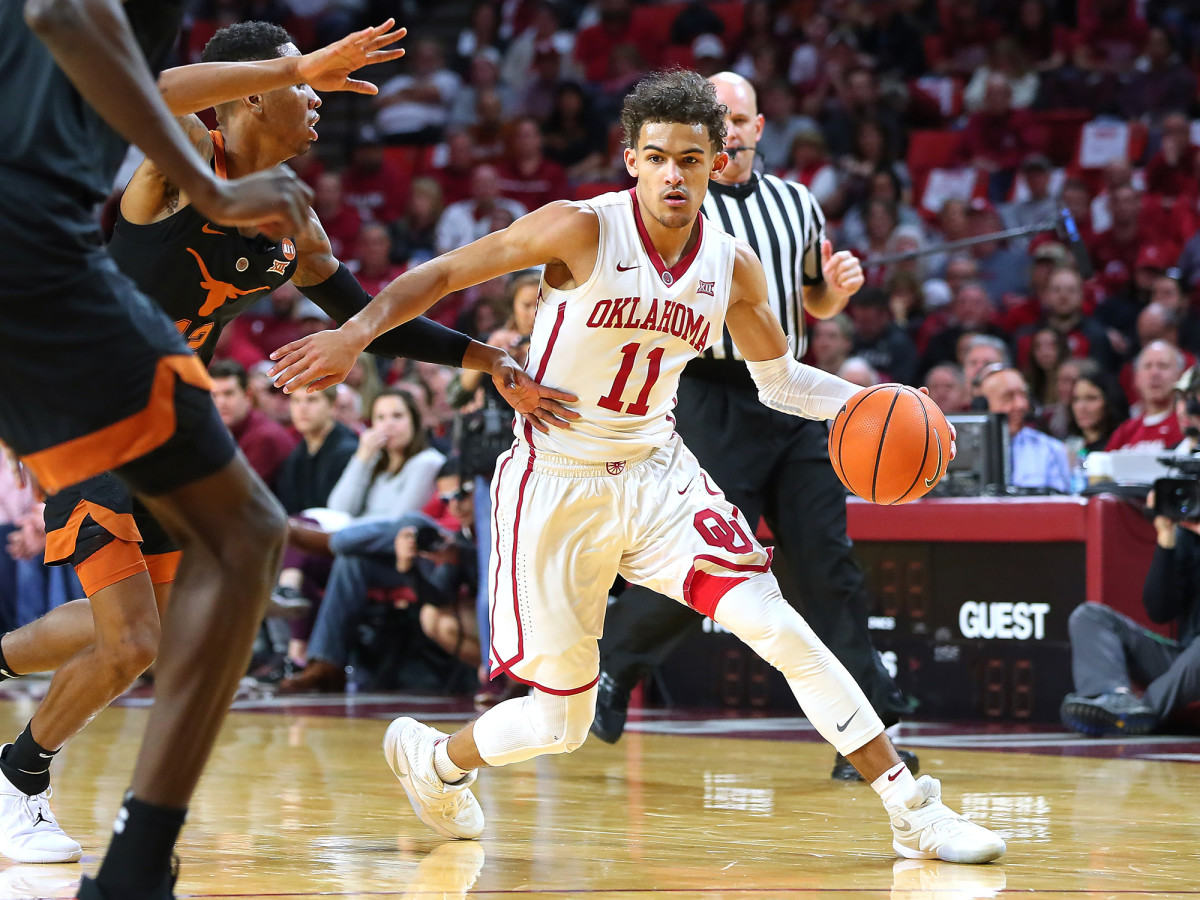
Most intriguing matchup: No. 7 Rhode Island vs. No. 10 Oklahoma
For as tempting as it will be to pick Young to carry Oklahoma past the Rams (and possibly beyond), Rhode Island might have a backcourt that can combine to rival Young’s offensive firepower. In Jared Terrell, the Rams have a first-team all-Atlantic 10 guard who can strain defenses by knocking down three-point shots, getting to the free-throw line and converting his attempts once there at a favorable rate. And at full strength, fellow senior E.C. Matthews gives Rhode Island another dangerous perimeter scorer. The Rams are going to have their hands full trying to contain Young, but Oklahoma also has to reckon with a big defensive challenge. Plus, setting specific matchups aside, this could well go down as the final game of Young’s (brief) college career. Anyone who hasn’t watched him in a while should take advantage of this opportunity.
Who has the toughest draw? No. 5 Clemson
This might be the best team Tigers head coach Brad Brownell has had since he took over the program prior to the 2010-11 season. The Tigers already have notched as many wins in a single season as any other in Brownell’s tenure (23) and they rank 19th in Ken Pomeroy’s adjusted efficiency rankings. That said, Clemson could be in danger of being sent home in the first round. No. 12 seed New Mexico State is one of the top defensive teams in the country, and though it plays in a weak league (the Western Athletic Conference), it has already proven it can push high-major opponents: The Aggies upended Miami on Dec. 23 and fell by only five points to USC two days later.
Regional finalists
No. 1 Kansas vs. No. 3 Michigan State
Pick: No. 3 Michigan State
WEST
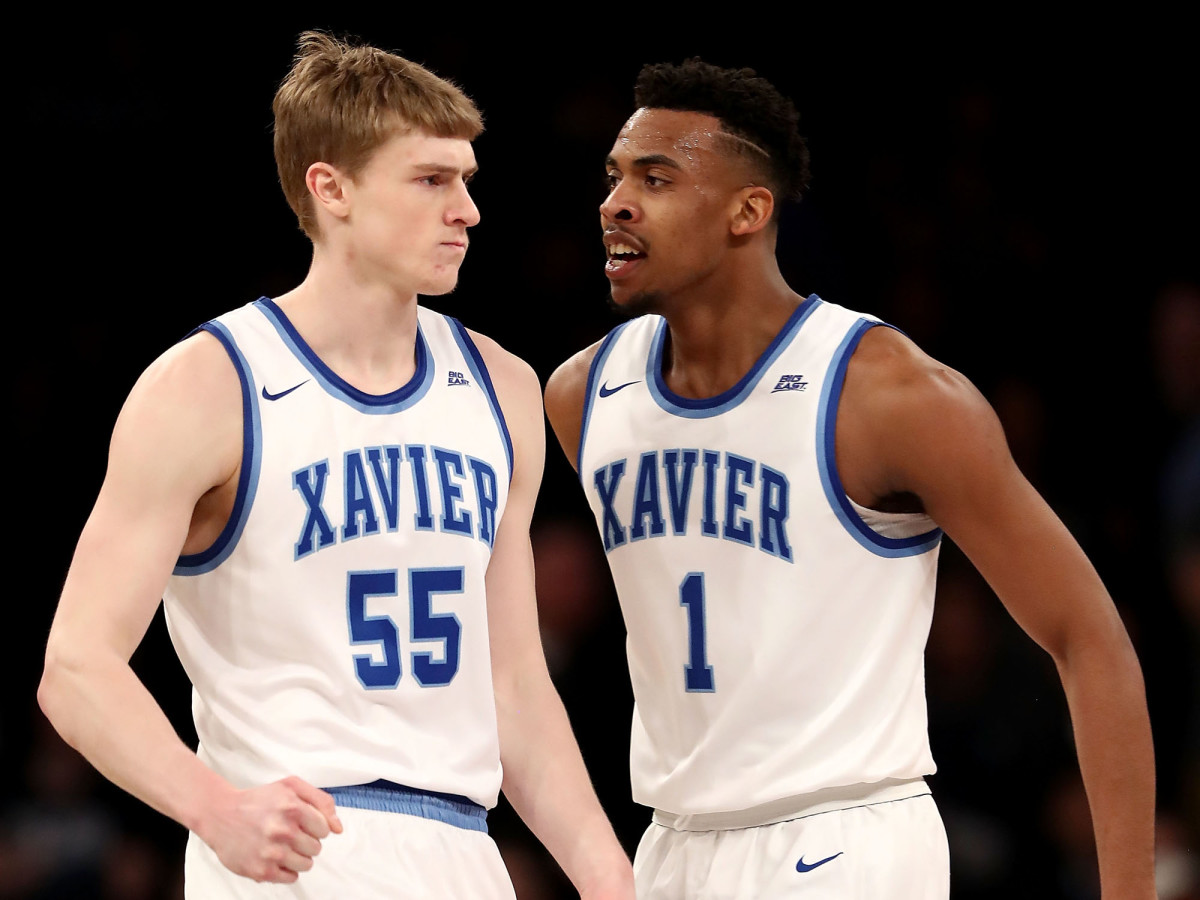
State of the No. 1 seed
Rather shaky, I’d wager. The West contains the most vulnerable-looking No. 1-seed; four dangerous, extremely well-drilled squads in North Carolina, Michigan, Gonzaga and Ohio State; and a lack of convincing Cinderellas-in-waiting. Throw in Houston, which came one shot away from winning its conference tournament, and two highly talented wild cards in Texas A&M and Missouri, and we could be looking at first-round chalk…followed by who-knows-what. No. 1 Xavier stumbles into the tournament off a bad conference tourney loss to Providence (who are also here as the No. 10 seed) and could be facing tough matchups every step of the way to San Antonio. This feels wide open.
Toughest draw: No. 1 Xavier
Here’s what the Musketeers’ road to the Final Four could look like: To get to the Sweet 16, they could face a tall, athletic Missouri team that shoots the three well, holds tough defensively and returns Michael Porter Jr. to the lineup. Next, they could get Ohio State, an in-state rival with an Top-20 defense, or Gonzaga, a team with as much talent as anyone in the region and that hasn’t lost since Jan. 18. Lying in wait after that could be Michigan, who just won the Big Ten Tournament and is coached by legendary wizard John Beilein, or a North Carolina team who can match Xavier’s firepower and played arguably the toughest schedule in the country.
According to KenPom.com, Xavier rated 14th in adjusted efficiency differential this season despite earning a one-seed. The other three top seeds in the West finished seventh (UNC), eighth, (Gonzaga) and 10th (Michigan). Ohio State was just a hair behind at No. 15 and sixth-seeded Houston came in at 17. Your best bet as a prognosticator is to disregard the seeding and focus on the data. Nothing about this looks simple.
The team that could bust your bracket: No. 4 Gonzaga
OK, so the Bulldogs are not a real underdog. But there’s not a convincing low seed to be found here and if we interpret “busted” as “might oust a No. 1,” look no further than Gonzaga. This is a different team from the one that finished as last year’s national-runner up, but while the defense isn’t quite as stout, the Bulldogs are plenty tough. They feature an experienced floor leader and defensive anchor in Josh Perkins and Johnathan Williams, and a variety of gifted scorers led by red-hot stretch big Killian Tillie, who’s shooting 84% from three-point range over his last six games. In all likelihood, the Zags will be the only regional finalist in the West that actually plays on said coast. The Bulldogs are also headed to a favorable early site in Boise.
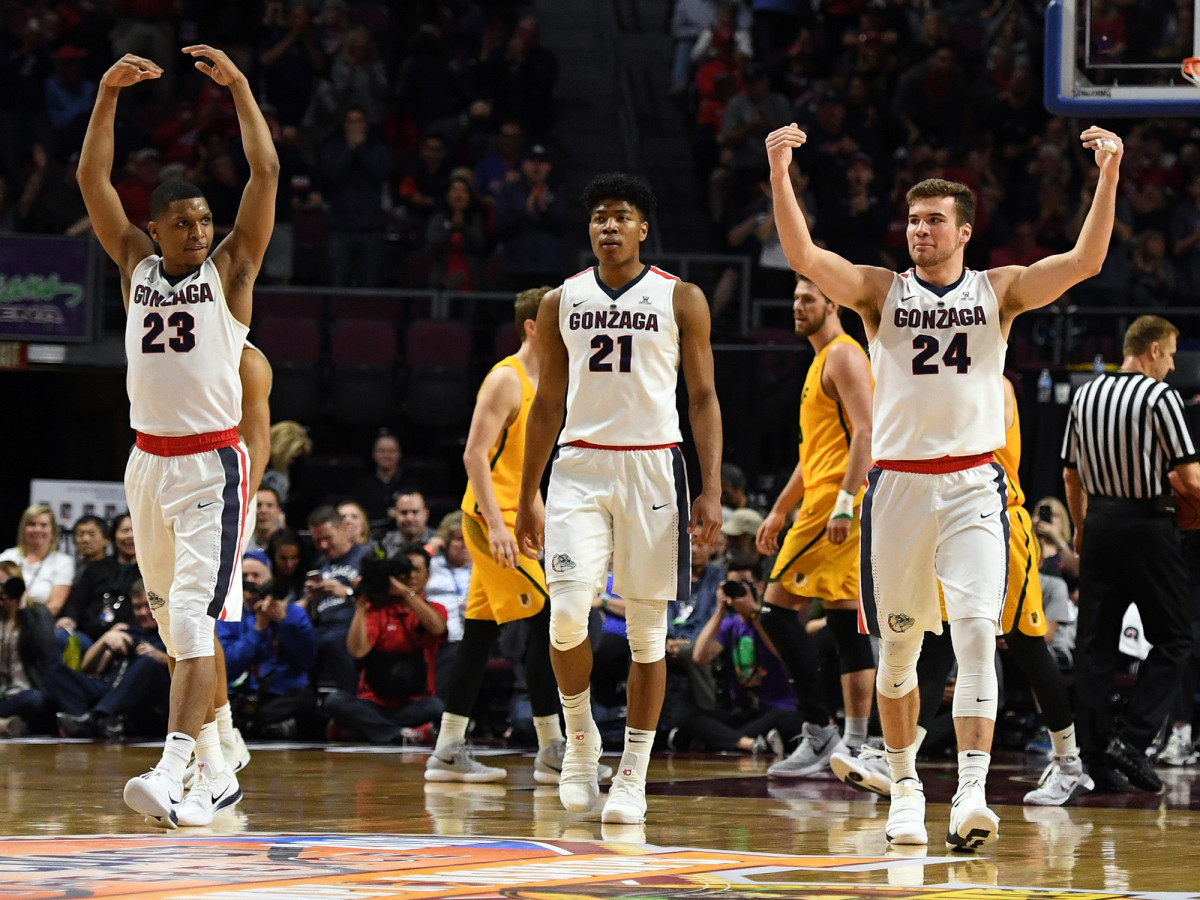
First-round opponent Greensboro’s only notable win came at North Carolina State and Gonzaga has yet to take a truly bad loss and can match the Spartans’ size up front. Ohio State is plenty tough, but remember that Gonzaga topped them by 27 points at the PK80 in November. And if they can get past a vulnerable Xavier team from there, a 2017 title game rematch against North Carolina should be primo viewing. A Final Four run isn’t out of the question—and wouldn’t be a total shock, either.
Player to watch: Michael Porter Jr., F, Missouri
He’s no sure thing, but Porter is surely a person of interest for tournament-watchers and NBA front offices alike. After having back surgery, missing most of the season and making a surprise comeback, Porter didn’t look or play great in his return against Georgia last week. Florida State’s underwhelming defense could be a nice opportunity to get his legs back. If he comes remotely close to his usual self, the gifted freshman scorer could be the key to a surprise run for the Tigers, who could make life pretty tough for Xavier in a potential Sweet 16 tilt.
Most intriguing matchup: No. 5 Ohio State vs. No. 12 South Dakota State
South Dakota State is the small school most likely to make some first-round noise in this region. The Jackrabbits are dancing for the third straight year and will be playing relatively close to home in Boise. Led by efficient, versatile junior big Mike Daum—23.8 points and 10.4 boards per game—South Dakota State controls the pace, prevents offensive rebounds, hardly ever turns the ball over and makes threes at a 39% clip. They have the experience and chops to keep up with the Buckeyes, who will counter with a talent of their own, Big Ten Player of the Year Keita Bates-Diop (19.4 points, 8.8 rebounds). Ohio State lacks a great secondary shot-creator and its offense can stall out when Bates-Diop doesn’t have it going. Circle this one.
Regional finalists: No. 2 North Carolina and No. 4 Gonzaga
PICK: North Carolina
The Tar Heels had everything clicking at the ACC tournament with a selfless, entertaining brand of ball, relying on a variety of scorers and an experienced starting five that moves the ball and makes hustle plays. They’ll have an edge in close games and won’t run into any buzz saws in the West (read: Virginia). Had UNC edged the Cavaliers on Saturday, it might have ended up with Xavier’s one-seed to begin with. Buy stock now.
